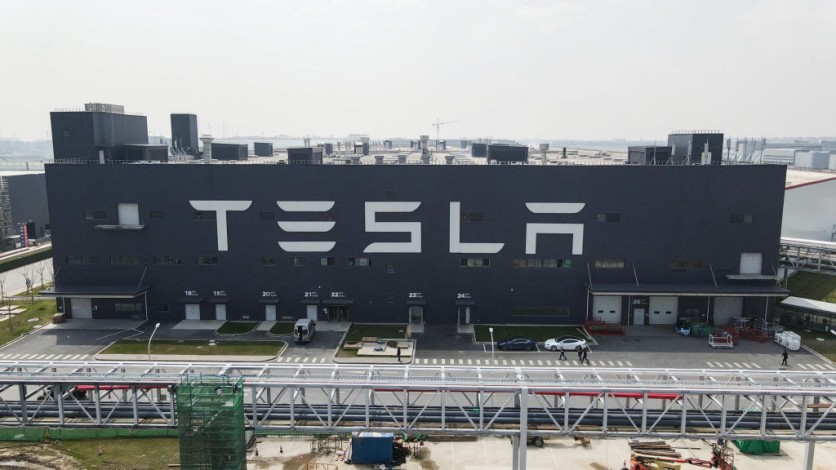Tesla's newest venture, automated robotaxis, teased by Elon Musk just last week, has reportedly yet to notify prominent robotaxi regulators regarding its plans nor secure permits needed to operate its services.
The two licenses Tesla would require to run a driverless car service in the most populous state in the union have not yet been applied for, according to the two state regulators in California.
Arizona and Nevada, two more states that control robotaxis, also stated they had not heard from Tesla on its intentions.

(Photo: Xiaolu Chu/Getty Images) An aerial view of Tesla Shanghai Gigafactory on March 29, 2021, in Shanghai, China. Tesla Shanghai Gigafactory reportedly produces vehicles at a rate of about 450,000 cars per year.
The absence of permissions, or any effort to obtain them, begs the issue of how soon Tesla could launch a robotaxi service. Tesla representatives did not immediately answer a request for comment on Thursday.
As the epicenter of the robotaxis industry, California mandates that prospective robotaxi providers secure at least two permits.
Tesla presently holds the lowest-level permission, enabling it to test autonomous vehicles with human drivers. The DMV is responsible for issuing permits to implement autonomous technology on the road.
Only three companies hold the top-level permission, which enables the deployment of autonomous cars without human drivers.
Read Also: Waymo Gears Up for LA Robotaxi Service After State Approval
Tesla's Robotaxi Amid Other Ventures
Tesla's stock reportedly closed over 5% higher due to investors buying into CEO Elon Musk's tease that the company will unveil its eagerly anticipated robotaxi on August 8.
Tesla seems to be moving away from its intended low-cost electric vehicle (EV) in favor of the robotaxi. Tesla has allegedly abandoned plans for the low-cost EV, in contrast to earlier remarks by CEO Elon Musk, who had voiced hope about the $25,000 model arriving by the second half of 2025.
Musk has denied the allegations and called them untrue. Rather, the business is reportedly putting more effort into developing robotaxis, which Musk believes could revolutionize transportation in the future.
Cruise Re-Enters the Robotaxi Industry
Tesla's lagging robotaxi permits come as prominent robotaxi company Cruise recently announced plans to resume testing its fleet of self-driving taxis in Phoenix, Arizona.
Reports, however, state that the corporation will initially conduct these tests with human drivers in the driver's seat, without passengers, and with the autonomous driving technologies turned off.
This action is in response to a recent incident in which one of Cruise's cars collided with a person, indicating that major obstacles might need to be cleared before the company resumes commercial operations.
Following these events, Cruise has been dealing with the fallout, halting operations statewide and updating the software of 950 vehicles to improve crash reaction methods.
Multiple probes into these instances have resulted in notable leadership changes within the corporation. Amidst these difficulties, Kyle Vogt, the former CEO and co-founder of Cruise, along with nine other executives, left the company.
Related Article: New York City OKs Robotaxis; Requires Human Safety Drivers for Autonomous Vehicle Tests

(Photo: Tech Times)
ⓒ 2026 TECHTIMES.com All rights reserved. Do not reproduce without permission.




